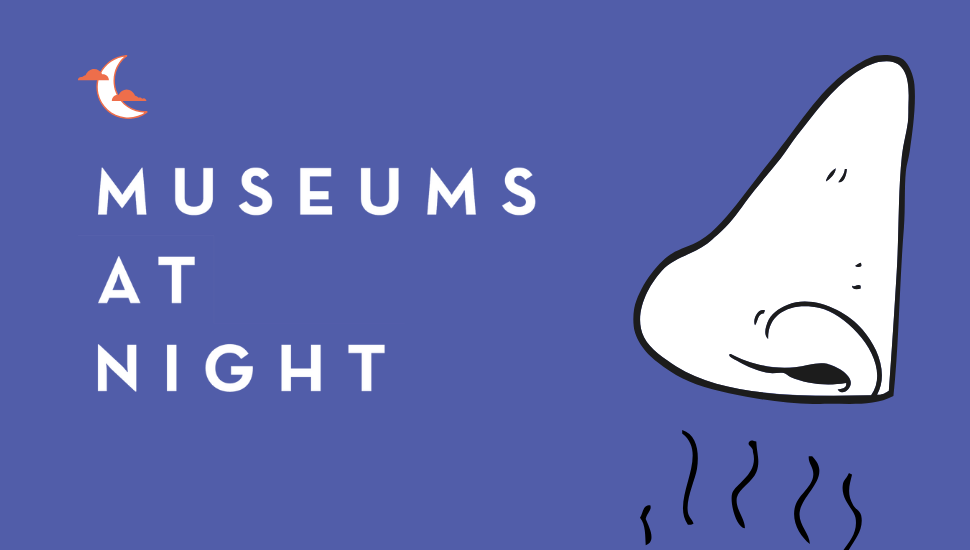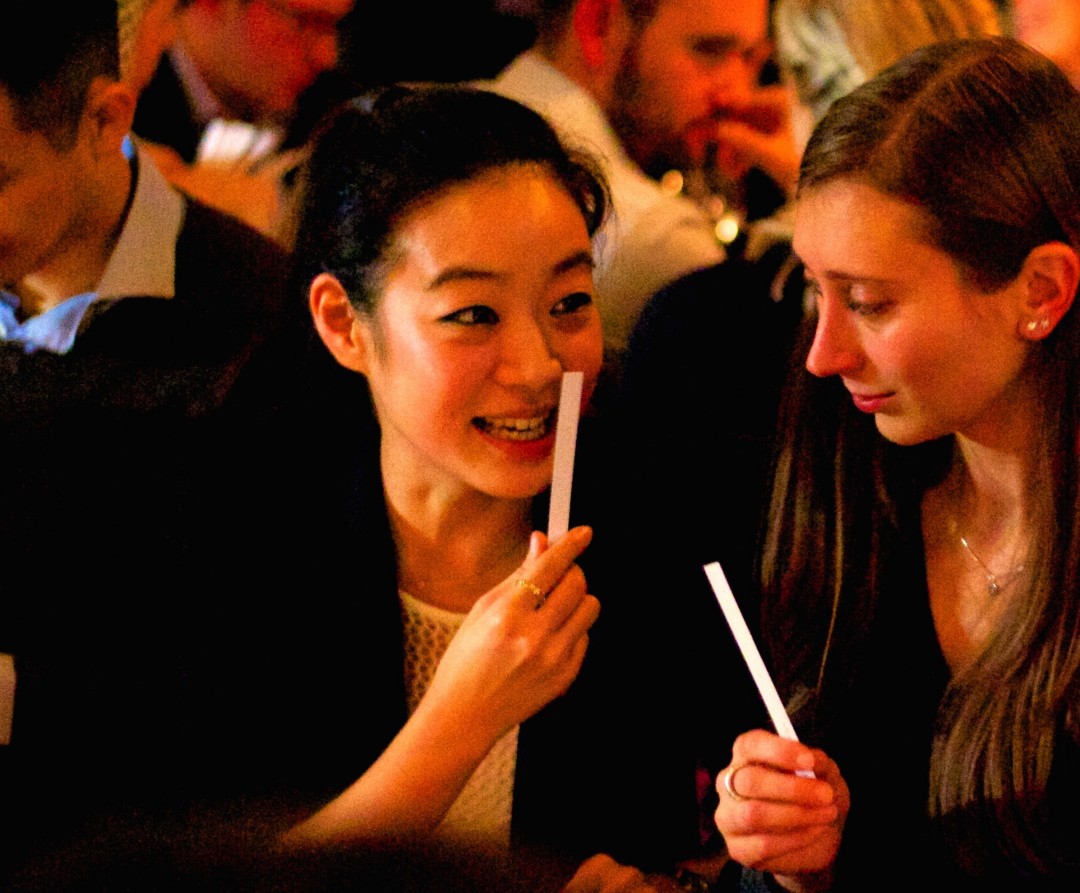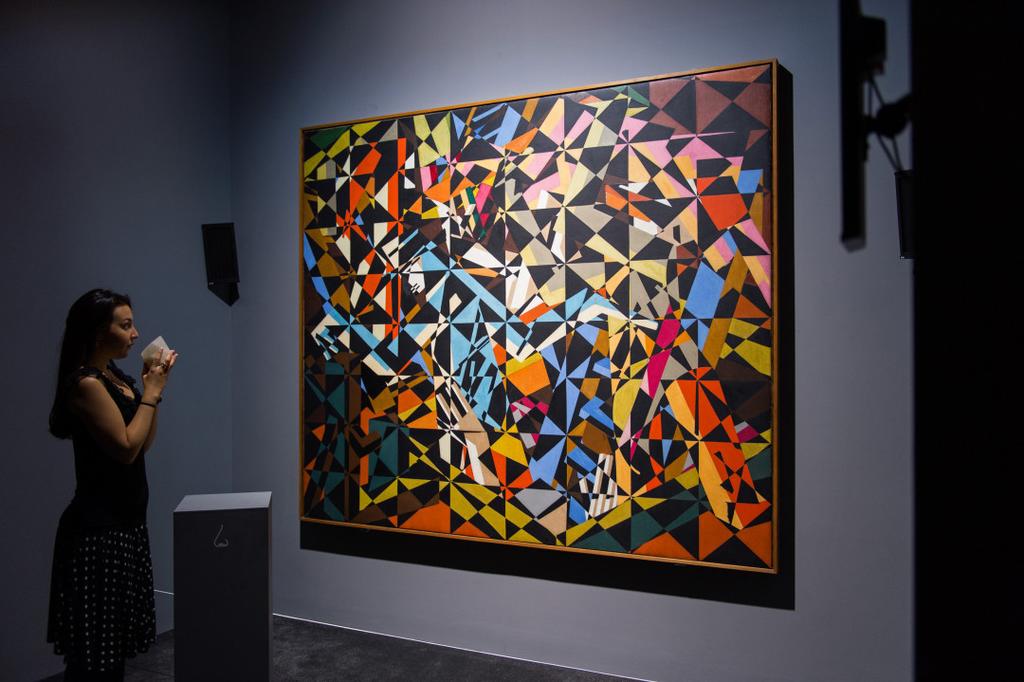
This is the latest in our Museums At Night series, looking at after-hours events at galleries, museums, historic buildings and libraries (and how they can flip the script on late-night culture). Here Odette Toilette, aka Lizzie Ostrom, looks at how playing to visitors’ sense of smell can transform their experience.
We usually take in information with our eyes and ears, yet by using our noses we can encounter a museum in a totally different, refreshing way. This is particularly relevant for visitors with visual impairments: an olfactory (relating to smell) approach can offer greater access.
WHY BOTHER WITH SMELL?
Smell is about our perceptions and opinions. We each form emotional responses to different smells based on our formative experiences with them. Museums and galleries can harness the potential of smell for mediating between visitors’ own ideas and memories, and what’s on display at the venue.
Smell is sociable and interactive. Crack out some scents at an event, and people love sharing and talking about what they think of them.
It cuts out the small talk, and even in a roomful of strangers each visiting on their own, people will often share moving memories that smells remind them of.
And you don’t need a big budget production or lots of art direction to create a special experience. It’s all in the imagination.
WHAT YOU CAN DO
Animate your collection
Smell brings a sense of immediacy and connection, meaning that you can bring your exhibits to life – perhaps objects that are usually stuck behind glass and hard to get out – giving people a more visceral take on them.
Alter perceptions
If your venue is a gallery or you hold an art collection, smell can be used as an interpretative tool.
With figurative artworks you could scent a scene, still life or a portrait. With abstract work, you can invite people to try two smells in front of the same painting to see what their eye is drawn to (colours/shapes/lines) and which scent they feel is more in tune with their response.
Interpretation
If you’re doing more in-depth events with groups, you could provide opportunities for them to make their own scents or fragranced products, with specialist support.

Possible subject areas to investigate
- The societal role of scent: Fashion, status and power. What perfumes might have been worn in a particular era and by whom? What would they have smelt like?
- Ritual and religion: Many faiths have a rich tradition of burning incense, or have ascribed particular symbolic meaning to their aromatics.
- Hygiene and medicine: From sanitation to smell and germ theory.
- Domestic uses: Scent at home, whether in cooking or entertainment.
- Trade and conquest: Aromatics can help tell the story of global movement and power.
- Botany and plants: Potentially zooming in on particular examples that have relevance to your location.
- Gender, marketing and advertising:: Fragrance advertisements, possibly more than any thing other, are selling a product that’s intangible, ephemeral and elusive. They often tap into all sorts of fads and topical concerns in order to make that perfume relevant for its audience.
- Smells associated with a place: No matter how unusual…
WHAT KIND OF SMELLS CAN I USE?
You don’t need to get your hands on specialist kit to start running events like this.
1. If collection objects can be handled, work with the innate smell of the exhibits. The Imperial War Museum North recently collaborated with The British Society of Perfumers to animate objects from the Second World War. One perfumer created a conceptual scent inspired by a piece of shrapnel, but the audience also got to pass round the material itself and everyone inevitably held it up to their noses.
For example, I interviewed the archivist for a fashion exhibition of Isabella Blow’s clothes at Somerset House, who told me that as she was cataloguing she could smell a famous perfume called Fracas coming off the garments – a scent for which Isabella was known. So while we didn’t touch the pieces in our event, we could get hold of the Fracas.
2. It’s much easier than it used to be to get hold of aromatic raw materials – from essential oils to single molecules used in perfumery. This is particularly useful if you want to showcase aromatics used in historic recipes which played a part in material culture. Take a look at our sample risk assessment on how to do this safely.
3. You can also source perfume and scented household products, whether heritage brands of fragrance such as the English houses of Floris, Penhaligons and Yardley; soaps; or traditional cleaning products. These are particularly evocative for oral history, or exploring themes within living memory.
4. You can also bring in in everyday objects and smells, whether that’s spices from the supermarket, flowers or herbs. And even unusual kit like artists materials can have a provocative scent,such as turpentine, oil pastels and pigments. For more ideas, we recorded this podcast with a specialist in historic paint techniques who has been restoring the 18th century Gothic house Strawberry Hill, discussing the smells of his craft.
INSTALLING IT
This will depend on your preferred set-up and budget, whether you’re thinking about a workshop or talk format, or if you’d prefer to install scents for attendees to discover in their own time through the evening.
One easy way is to buy some porous card from an art shop or specialist scent sampling strips (see resources below), which you can dip or spray in liquid fragrance and dry. They can easily either be passed among visitors or given to them before they venture around the venue solo, and then either put in a recycling bin after the event or taken home.
You can fragrance cotton wool or another porous material and keep it in a box with a hole cut in for smelling. This avoids people having any direct contact with the material. These can be installed among displays, or passed around for an event.
If your organization has a higher budget and would like to use ambient smells, you can use specialist diffusers for scenting areas of space from 8sqm metres to 50sqm or more. To deliver return on investment these work best for ongoing exhibits, though it is possible to run them for a single event.
The image below shows an installation I helped to mount for Tate Sensorium, which invited gallery visitors to experience paintings from the Tate’s collection using all their senses. Some paintings had multiple fragrances to try while looking.

We’ve prepared this downloadable two-page Health and Safety resource to go through when preparing to run your scent-themed event.
There is also a growing body of literature on scent, and a community of global practitioners using olfaction in a museums and heritage context.
On Twitter
@katemclean works on urban smellscapes/smell mapping and hosts smell walks around towns and cities.
@ucqbbem is a London-based researcher looking at smell as part of heritage.
Online resources
Melanie McBride runs Smell Lab which develops DIY learning with smell: http://melaniemcbride.net/
The Library of Fragrance: used by lots of performance companies to source unusual smells in spray bottles.
Baldwins: useful online shop for sourcing raw materials including dried herbs, gums, resins, essential oils and incense.
Scent Strips: online shop for ordering smelling strips.
***
You can read the full article, complete with some suggestions for further reading, in the Museums At Night resource section of their website here.